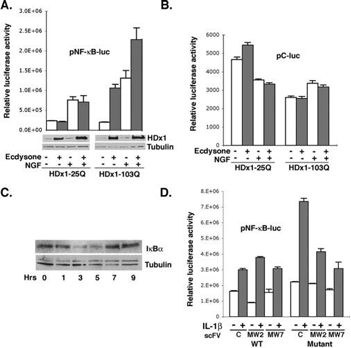 The mechanisms surrounding HD are raising interesting viewpoints, especially with the help of R6/2 mice as models, transfected with an adenovirus for the trinucleotide repeat (24). The better we can create novel approaches in tracking the progression of this disease, the better position we will be in to create biomarkers of this disease progression, and be able to identify their resultant manipulation from targeted protein interactions.
The mechanisms surrounding HD are raising interesting viewpoints, especially with the help of R6/2 mice as models, transfected with an adenovirus for the trinucleotide repeat (24). The better we can create novel approaches in tracking the progression of this disease, the better position we will be in to create biomarkers of this disease progression, and be able to identify their resultant manipulation from targeted protein interactions.
By virtue of investigating more into complex pathways within the neurons, such as the Kyuridine Monooxygenase Pathway (KMO), we can come up with novel and targeted practices to understand immune reactions involving mutant htt (mhtt), cytotoxicity, membrane protection, in the ultimate goal of delaying, ceasing, or ameliorating the effects of mhtt.


